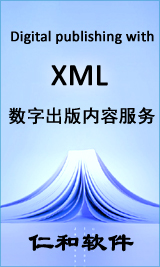Jun ZHANG
材料科学技术(英文)
An empirical formula for composition demixing analysis in cathodic arc ion plating using alloy target is established based on the concepts of average charged state and relative demixing parameter. The level of composition demixing effect is presented by demixing degree of one element. For binary constituent alloy target, the composition change trend in coating is discussed and the limit of demixing degree for each element is determined. The content of one element with higher average charged state gets larger in coating than in alloy target, at meantime, the content of one element with lower average charged state gets less. For each one of the two constituents, the less the atom percent in alloy target, the larger the difference of its contents between the coating and the target. For triple constituent alloy target, the content change of one element with moderate average charged state is discussed in detail. Its content in coating getting larger or less is determined by the combination result of the contents of the other two elements in alloy target. For a given content of the element with moderate average charged state in triple alloy target, the content deviation level of that element from coating to alloy target will be not larger than that using binary alloy target containing only that element and one of the two others. According to the wanted coating composition, the composition design of alloy target is easily deduced from the formula.
关键词:
Cathodic arc ion plating
,
arc
,
ion
,
plating
,
alloy
,
coating
,
a
任雅勋
,
张春雷
电镀与涂饰
针对微型陶瓷封装体电阻器的特点和用户对零件的特殊性能要求,介绍了其电镀工艺实施过程的注意事项.探讨了各工序溶液体系、镀层厚度、电镀工艺条件、导电介质的形状及大小等因素对电阻器可焊性和耐焊接热性能的影响.最终确定对微型陶瓷封装体电阻器先电镀半光亮镍再电镀哑光锡,得到具有优良附着力、焊接性和耐焊接热性能的镀层.
关键词:
微型陶瓷封装体电阻器
,
电镀
,
镍
,
锡
,
附着力
,
可焊性
,
耐焊接热性能
赵帅
,
兰伟
表面技术
doi:10.16490/j.cnki.issn.1001-3660.2015.11.018
介绍了石油管道内溶解氧、二氧化碳、硫化氢、以及二氧化碳和硫化氢协同腐蚀的机理. 综述了油气管道内防腐技术,现阶段主要的处理方式是选择耐蚀金属材料或非金属材料、添加缓蚀剂、涂层防腐和衬里防腐. 分析了各种内防腐技术的优缺点,认为管道内防腐在未来的发展方向是将基材选择、添加缓蚀剂、内涂镀层和内衬里技术进行综合,以减缓管道内的腐蚀. 低碳钢表面镀镍层自纳米合金化技术,即是集中内防腐技术的综合运用,得到了表面无缝冶金结合的高耐蚀性能管材,是未来发展趋势的代表.
关键词:
管道
,
防腐
,
耐蚀材料
,
缓蚀剂
,
涂层
,
镀层
,
衬里
杨黎晖
,
李言涛
,
蔡国伟
,
侯保荣
,
黄彦良
电镀与涂饰
综述了近5年来国内外镁锂合金表面防护技术的研究进展,包括化学转化、阳极氧化、电镀、化学镀、气相沉积、有机-无机杂化涂层、热压技术、热喷涂和电泳涂装等。建议针对膜层缺陷和基体特性开发新工艺,并与有机疏水膜结合,或开发多种复合转化膜防护工艺,以发挥各种化学转化膜的优势,从而增强镁锂合金的耐蚀性。
关键词:
镁锂合金
,
腐蚀防护
,
表面处理
,
镀覆
,
转化膜
,
涂层
,
气相沉积
张馥
,
石磊
,
张明晓
,
张琦
,
许峰源
,
王光明
,
扈宝国
,
杨亚文
表面技术
介绍了一种硫酸盐电镀锌铁合金工艺及新型光亮剂.研究了镀液中FeSO4·7H2O浓度、锌铁总离子浓度、光亮剂用量、阴极电流密度、pH值、温度等因素对镀层含铁量的影响.结果表明:随着镀液中锌铁总离子浓度和温度的升高,镀层的含铁量降低;随着阴极电流密度和pH值的增大,镀层的含铁量先增加,后降低;随着FeSO4·7H2O浓度的升高,镀层的含铁量增加.探讨了新型光亮剂对镀层的影响,获得了最佳电镀方案.
关键词:
电镀
,
硫酸盐
,
锌铁合金
,
光亮剂
林燕
,
江小勇
,
魏喆良
表面技术
目的 解决现有氯化盐体系和硫酸盐体系下,铜粉浸镀锡存在的问题.方法 以甲基磺酸锡为主盐,硫脲为络合剂,对铜粉进行浸镀锡,并分析锡离子浓度、硫脲浓度、甲基磺酸加入量及镀液温度等因素对锡镀层微观形貌的影响.结果 在甲基磺酸盐体系下,锡离子可与硫脲形成复杂络合离子,降低了锡离子的平衡电极电位,使铜粉浸镀锡成为可能.结论 当锡离子浓度为0.15 mol/L,硫脲浓度为0.80mol/L,甲基磺酸加入量为50 mL/L,镀液温度为75℃时,可获得均匀、致密且与铜粉表面结合良好的镀锡层.
关键词:
浸镀锡
,
甲基磺酸锡
,
铜粉
,
镀层
刘建平
,
刘渊
,
覃庆生
电镀与涂饰
镍镀层作为生产电接触元件中铜基体和银复合层之间的过渡层,其可塑性、抗张强度、韧性和延展性均须满足一定的要求.介绍了电接触元件的生产工艺,对适合于电接触元件的镀镍工艺进行了探讨,获得了较好的镀镍工艺条件:NiSO4·7H2O250 ~ 350 g/L,NiC12·6H2O 25 ~ 30 g/L,H3BO3 30 ~ 40 g/L,MgSO4 20 ~ 50 g/L,(C12H25SO4)Na 0.01~ 0.02 g/L,pH 3 ~4,温度40 ~ 50℃,电流密度2.0~2.5 A/dm2.该镀镍工艺操作简单,镀液稳定,所得镍镀层光亮平整、延展性好,可以90°折弯而不出现裂纹,成品合格率达98.5%以上.
关键词:
电接触元件
,
镍
,
银
,
电镀
,
抛光






